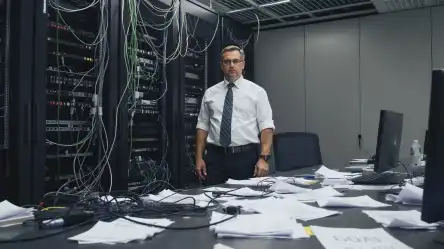AI experimentation that bypasses IT leadership can underestimate the technical demands of success, leaving CIOs to clean up the mess. Better to align and collaborate from the start.

CIOs have a lot of work ahead of them to ensure the success of AI projects they lead, but many will soon be saddled with another responsibility: picking up the pieces of failed AI endeavors initiated by their business colleagues.
When AI experts give advice about successful deployments, they often urge CIOs to work closely with business leaders to launch projects that create value for their organizations.
But while AI experts see problems when IT teams launch AI projects without strong business cases, they also warn of danger when other departments push AI experiments without full buy-in from the CIO.
And the fallout is coming soon. IT analyst firm Forrester predicts that 25% of CIOs will be asked in 2026 to bail out business-led AI failures in their organizations, according to the firm’s “Predictions 2026: Tech Leadership” report.
In some cases, these failed AI projects will have some CIO input from the beginning, but overexuberance to do something with AI has led to miscalculations about the amount of technical support needed, says Mark Moccia, a vice president and research director at Forrester.
“We’re seeing that because of the explosion and the desire to go really fast; we’re spending a lot of money,” he says. “It’s cutting corners, trying to rush deployments to production, and therefore having those become either too costly because you don’t understand the economics while the models start running, or too many defects causing other problems in the environment.”
Moreover, many organizations haven’t had the most robust enterprise architecture or governance procedures in place before launching a series of AI projects, Moccia adds.
CIO out of the loop
While some business-led AI projects include CIO input, AI experts have seen many organizations launch AI projects without significant CIO or IT team support.
When other departments launch AI projects without heavy IT involvement, they may underestimate the technical work needed to make the projects successful, says Alek Liskov, chief AI officer at data refinery platform provider Datalinx AI.
In a rush to adopt AI, some business teams have ignored IT requirements, he adds.
“What we’re seeing is they’re just lacking the depth of understanding of everything you need to do from a data perspective, from a hardware perspective, from a quality perspective, from a testing perspective,” Liskov adds. “It’s all of the technical work that needs to happen in order for you to have a successful outcome.”
Many organizations have taken a “bottom-up” approach to AI adoption, creating scenarios where IT teams aren’t significantly involved, adds David Shim, CEO of AI notetaker provider Read AI.
“Most successful AI tools have spread organically, with employees adopting what actually helps them get work done, instead of coming from top-down mandates,” he says. “That’s great for innovation, but it also means many organizations now have fragmented AI usage, inconsistent data pipelines, and no centralized governance.”
Many organizations are now at the tail end of what Shim calls the “imagination phase” of AI adoption, with experimentation with in-house built agents and standalone products falling off.
“Now the focus is on real productivity and operational results,” Shim explains. “As those expectations rise, leadership is realizing that efforts need to be standardized. That’s when CIOs get pulled back in to make it work at scale.”
Change in culture
Datalinx’s Liskov urges organizations to create project launch teams that include IT leaders, business leaders, and other stakeholders. But getting those groups to collaborate well can take a major overhaul of company culture, as business leaders sometimes see IT teams as impediments, he notes.
“Start with the tech folks in the room first, before you get much farther,” he says. “I still see many organizations where there’s either a disconnect between business and IT, or there’s lack of speed on the IT side, or perhaps it’s just a lack of trust.”
Despite the doubts, IT leaders need to be involved from the beginning of all AI projects, adds Bill Finner, CIO at large law firm Jackson Walker.
“AI is just another technology to add to the stack,” he says. “Better to embrace it and help the business succeed then to sit back and watch from the bench.”
CIOs should be the in-house experts on vetting potential solutions and ensuring costs are controlled, he adds.
“It’s a great opportunity for CIOs to work closely with all the practice areas both on the legal and business professional side to ensure we’re educating everyone on the capabilities of the applications and how they can enhance their day-to-day workflows by streamlining processes,” Finner says. “CIOs love to help the business succeed, and this is just another area where they can show their value.”
Prepare to take over
Forrester also recommends that CIOs prepare themselves for when company executives lean on them to fix failing AI projects. IT leaders should also assess where their organizations’ AI projects are falling short.
Right now, just 39% of all AI decision-makers surveyed by the firm say their CIOs or CTOs lead the AI technology strategy, while 21% lead the AI business strategy. Forrester expects those percentages to double as organizations realize that IT leaders are in a prime position to build successful AI agents.
IT leaders “will establish the right governance and capabilities to curate data and knowledge assets, design great user experiences, and carefully manage output quality,” Forrester says in its 2026 predictions report. “CEOs can’t wait for a high-profile AI ethics or policy violation failure hitting the headlines to be the impetus for establishing this governance.”










